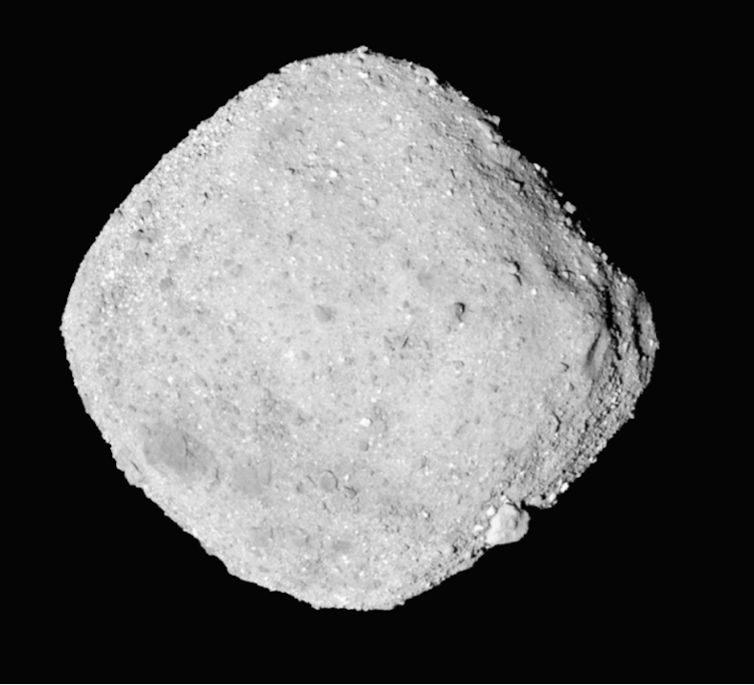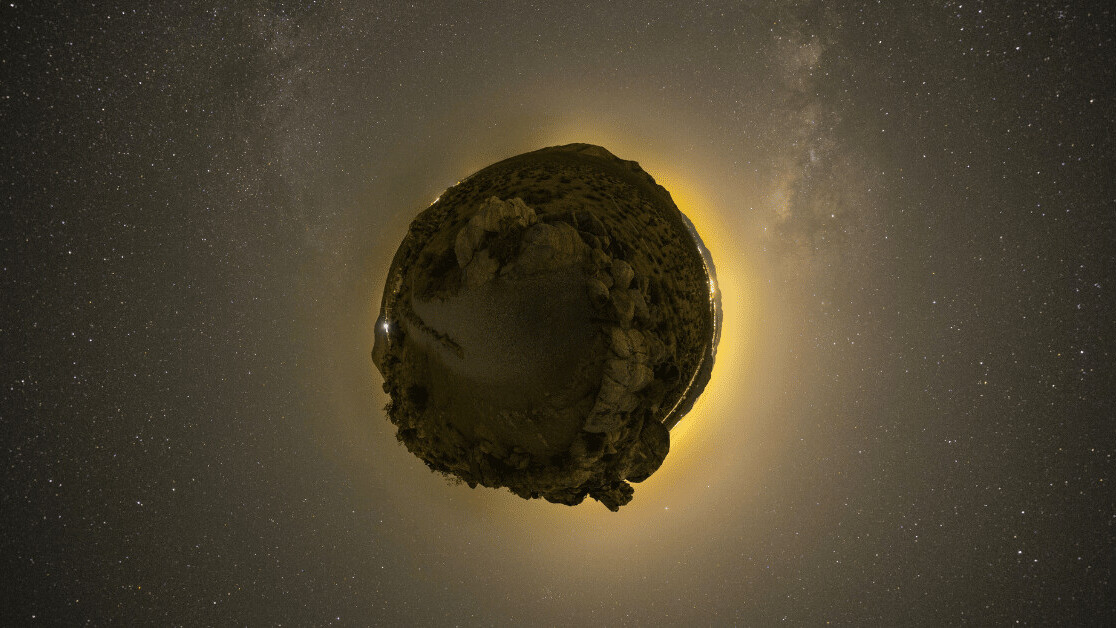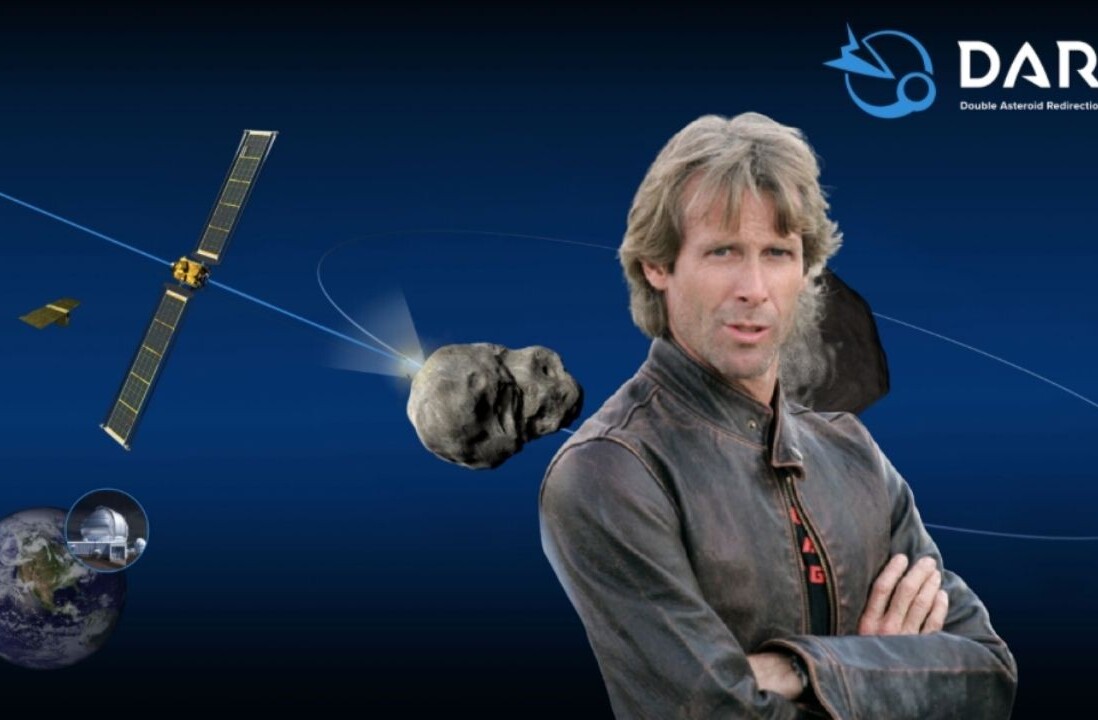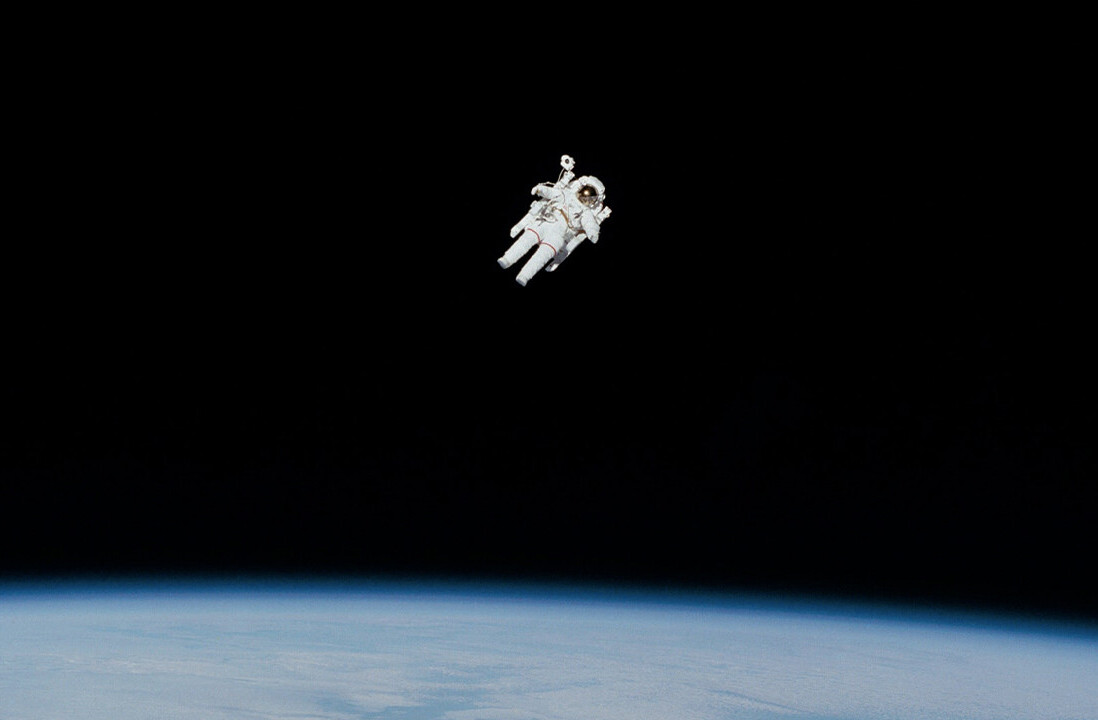Relief showed clearly on the faces of the team of NASA scientists and engineers as they were told: “Touchdown is complete”. Then applause a few seconds later for “back away burn complete”. The most hazardous part of the mission was over – and seemingly successful, although we will have to wait for a few more days to hear the scale of the success.
OSIRIS-REx (for Origins, Spectral Interpretation, Resource Identification, Security, Regolith Explorer)) was launched in September 2016, arriving at its target asteroid 101955 Bennu in December 2018. The purpose of the mission was to characterize the asteroid, then bring some of it back for study on Earth.
The spacecraft spent two years circling Bennu, making detailed maps of its surface, learning as much as possible about the asteroid before the next phase of the mission: looking for somewhere safe to land. Or, rather, not to land, but to make a very rapid “touch-and-go” visit to the surface – where it would collect fragments of material to return to Earth. It was completion of the touch-and-go manoeuvre that prompted the clapping and cheering in mission control.
Why Bennu? And why the relief? After all, this is not the first asteroid that a spacecraft has visited – and it is not the first small body that has been landed on. That record is held by the NEAR spacecraft that made a controlled crash-landing on Asteroid 433 Eros in 2001. And I still remember the emotion in the control room when Philae landed on comet 67P/Churyumov-Gerasimenko in 2014.
The relief was because Bennu is small – only about 500 meters across – a fact that was known when it was selected as a target. But it is oddly shaped and active – two things that were not known. It looks a bit like an old-fashioned spinning top, or a rough diamond, pointed at the top and bottom and fatter in the middle. Because it is so small it was assumed that Bennu would be quiescent – it wouldn’t, for instance, be behaving like a comet and ejecting bursts of gas and rocks.
But because nothing in the solar system is simple, when OSIRIS-Rex got close to Bennu, it found that the asteroid was throwing small amounts of material from its surface. The particles were less than a centimeter across, and most of them landed back on the asteroid – generally closer to the equator than the poles, which changed its shape over time.

One of the consequences of the activity – explained by changes in temperature fracturing larger boulders and breaking up the rocks – is that the surface of Bennu is completely covered in rubble, much more than had been expected. This made selecting a site for sample collection more difficult.
Secrets of the solar system
Bennu is a Near Earth Asteroid – it has a one-in-2700 chance of colliding with the Earth in about 170 years’ time. It is also believed to be rich in the type of organic compounds that might have seeded the Earth to enable life to arise.
Another surprising find that came from the mapping campaign was that Bennu was not only rich in clay minerals, but that veins of carbonate were present. Clay and carbonates require water – lots of it – so these minerals must have formed when Bennu was part of a larger asteroid. There is no running water there now – but there might be small pockets of ice below the surface. While this ice will not be collected by OSIRIS_Rex, the effects of water should be seen in the material it’s gathered.
Studying these materials will help us understand the primitive dust from which the solar system grew, and the range of organic compounds present. It will also tell us the physical properties of something that might hit the Earth, potentially helping us stop it.
It was always going to be tricky to collect material from the surface – any attempt to land would be unlikely to succeed, because the low gravitational pull of Bennu would not grab onto a lander and hold it in place. A lander would bounce off, back into space. This is why NASA used the touch-and-go approach – the spacecraft approached the asteroid very slowly, hovering only a meter or so from its surface, while an arm was extended to touch the surface to collect a sample.
It did this by blowing a jet of nitrogen gas onto the surface, which was sufficiently powerful to throw material into the collection canister. The slow approach to the surface took several nail-biting hours, while the collection operation took a matter of seconds. Collection over, and the spacecraft backed away – hence the relief at mission control at the “back away, burn complete” message, showing that OSIRIS-Rex was moving away from the surface.
We don’t yet know how much material was blown into the canister – and we won’t know until it arrives back on Earth in September 2023. It might be 60 grams – which is the target – or it might be as much as a kilogram. An attempt will be made later this week to see how the moment of inertia of the spacecraft – its uniform motion in a straight line – has changed, which should give a first approximation of the amount collected.
When the sample comes back to Earth, it will be analyzed by an international team of scientists who will measure all aspects of the material’s composition and structure, especially the organic and water contents of the soil.
This is when we’ll get some answers, which will tell us about our own origins as much as about the origin of asteroid Bennu.
This article is republished from The Conversation by Monica Grady, Professor of Planetary and Space Sciences, The Open University under a Creative Commons license. Read the original article.
Get the TNW newsletter
Get the most important tech news in your inbox each week.





